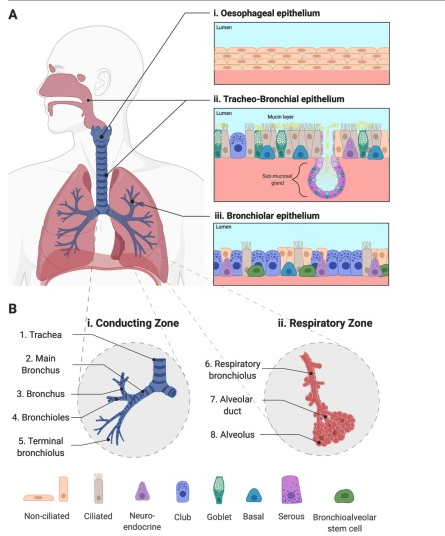


Preclinical studies of respiratory physiology have almost exclusively utilised non-humanised animal models, alongside reductionistic cell line-based models, and primary epithelial cell models cultured at an air-liquid interface (ALI). Despite their utility, these model systems have been limited by their poor correlation to the human condition. This has undermined the ability to identify novel therapeutics, evidenced by a 15% chance of success for medicinal respiratory compounds entering clinical trials in 2018. Consequently, preclinical studies require new translational efficacy models to address the problem of respiratory drug attrition.
This review describes the utility of the current in vivo (rodent), ex vivo (isolated perfused lungs and precision cut lung slices), two-dimensional in vitro cell-line (A549, BEAS-2B, Calu-3) and three-dimensional in vitro ALI (gold-standard and co-culture) and organoid respiratory epithelium models. The limitations to the application of these model systems in drug discovery research are discussed, in addition to perspectives of the future innovations required to facilitate the next generation of human-relevant respiratory models.
There exists a clear and present need to improve the human relevant tools at our disposal for mechanistic investigations of respiratory pathogenesis and therapeutic drug development. Current in vivo models almost exclusively utilise non-primate animals which have been indispensable for aiding advancements in the mechanistic understanding of pulmonary pathogenesis and therapeutic drug development (Bonniaud et al., 2018).
However, despite their utility, these animal models have been limited by their poor correlation to the human condition. Organisations such as the NC3Rs (UK National Centre for the Replacement, Refinement and Reduction of Animals in Research) have accelerated efforts to move beyond the use of animals for scientific purposes. Recent advances in the multidisciplinary fields of complex 3D cell culture, biofabrication and microfluidics offer unique opportunities to address the problem of generating models which faithfully replicate the biological processes of human organs in vivo.